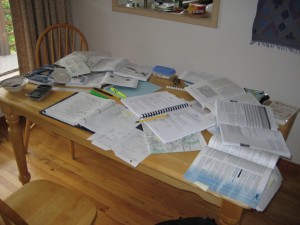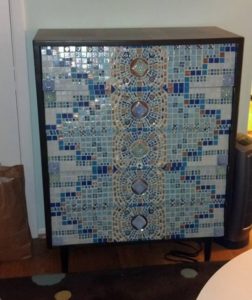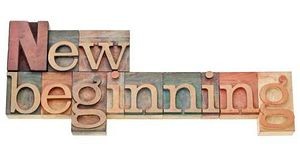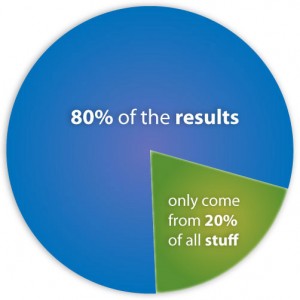 Each of my three children has their own photo albums that I have crafted for them over the years. In order to make these personalized keepsakes, I’ve adopted a simple photo organizing process. After taking photos with my smartphone, I always try to find some quiet time to delete the ones I dislike. About once a month, I then upload the “keepers” to my computer, edit them as needed and assign the photos to their appropriate folders, such as “2016 PHOTOS.” At the end of the year, I download my favorite photos onto a flash drive and take them to a photo processing center. Next, I place the hard-copy photos into each child’s temporary photo bin. Once sorted, I choose individual photo albums and begin filling them with memories. My oldest has about eight photo albums now and my youngest has about four. They will eventually take the albums with them to enjoy as adults.
Each of my three children has their own photo albums that I have crafted for them over the years. In order to make these personalized keepsakes, I’ve adopted a simple photo organizing process. After taking photos with my smartphone, I always try to find some quiet time to delete the ones I dislike. About once a month, I then upload the “keepers” to my computer, edit them as needed and assign the photos to their appropriate folders, such as “2016 PHOTOS.” At the end of the year, I download my favorite photos onto a flash drive and take them to a photo processing center. Next, I place the hard-copy photos into each child’s temporary photo bin. Once sorted, I choose individual photo albums and begin filling them with memories. My oldest has about eight photo albums now and my youngest has about four. They will eventually take the albums with them to enjoy as adults.
Although this photo organizing system works for me now, I honestly don’t wish to continue making albums for my children as they enter adulthood or for the next generation. With the recent birth of my granddaughter, I have implemented a simpler system. Now, I upload photos from my smartphone to an online photo service, such as Snapfish, and create photo albums from there. It’s much easier to create an online album if my photos are already streamlined and sorted. For example, in my granddaughter’s album, her pictures are assigned to a folder with her name and date. With today’s technology, creating beautiful keepsake albums is faster and easier than ever. It’s even possible to create albums directly from your smart phone with an app from Target.
If you find that you have a large assortment of photo prints, you can sort the photos using acid free photo boxes, or you can use shoe boxes, temporarily. For a recent client, we labeled her shoe boxes as “Travel,” “Nature,” and the names of her children. In her case, she decided to pass the photo boxes on to her children and skip the albums altogether. Other clients prefer to scan the photos, save them virtually and eventually create albums from their computers.
Photo organizing can be overwhelming when you have hundreds of photos stored all over the house. When working with my clients, I’ve found that once they get started, the memories come back, they start smiling, and a sense of peace comes over them. They know that their most treasured memories are safe and can be enjoyed by generations to come.
Click on the title above to learn more about the featured author.
 “How can I make my parents organize their papers? They gave me power of attorney and named me as executor, but I don’t know where anything is.” I receive phone calls like this several times each year. The caller is usually fearful, frustrated, and worried about the state of the parents’ affairs.
“How can I make my parents organize their papers? They gave me power of attorney and named me as executor, but I don’t know where anything is.” I receive phone calls like this several times each year. The caller is usually fearful, frustrated, and worried about the state of the parents’ affairs.
Each time I hear this question, or one like it, I’m reminded of the old lightbulb joke:
Q: How many psychologists does it take to change a lightbulb?
A: Only one, but the lightbulb has to want to change.
The same is true for a disorganized loved one – they have to want to change their situation. But even though we can’t make them change, there are a few things we can do to pave the way for them to request help.
First, a few things to remember:
In short, your parents likely feel some level of embarrassment or vulnerability. To be successful, you will need to be sensitive to their discomfort, and respect their pace. Here is the sequence I recommend to clients who are preparing to assume their parents’ affairs:
It might take a few iterations to build some momentum with your parent. The key is to respect your parent’s preferred pace. In time, your parent may trust you enough to delegate work to you, or let you hire a professional organizer.
Click on the title above to learn more about the featured author.
 While I don’t personally know enough about college basketball teams to predict who will win this year’s March Madness Tournament, I do follow the excitement as my family creates detailed brackets and fans bet on their top picks.
While I don’t personally know enough about college basketball teams to predict who will win this year’s March Madness Tournament, I do follow the excitement as my family creates detailed brackets and fans bet on their top picks.
In my play book, we are all winners when we follow organizing rules inspired by the concept:

The less you stress…the more freedom you gain.
The less you buy…the more financial resources you maintain.
Make your own play and create MORE in your life with these tips:
M – More clarity in your priorities gives you more time and space for life.
A – Anyone can become organized when you structure your time.
R – Review your next day’s schedule the night before to eliminate surprises.
C – Carve out time daily for exercise, nutrition and sleep.
H – Handle any task that will take less than 2 minutes – now!
M – Make physical AND mental space in your life.
A – Add breathing room into your schedule for delays and transitions.
D – Delegating is a skill worth learning – develop a team mentality.
N – NAPO.net is your go-to for help if some rules seem beyond your reach.
E – Easy access is your goal for anything you use on a daily basis.
S – Simplify one area of your life today.
S – Stay focused on priorities for big playoffs…I mean big PAY-offs 🙂
 Do you enjoy spending an afternoon crafting (otherwise lovingly known to me and my friends as a Crafternoon)?
Do you enjoy spending an afternoon crafting (otherwise lovingly known to me and my friends as a Crafternoon)?
Do your materials and supplies seem to multiply like Gremlins?
Do you buy more supplies because you can’t find the ones that you already have?
Do you dread clean up time because you don’t know where to put things? Or do you avoid it all together?
The good news is that as an artist, no matter what medium you work with or how messy you can get, you have a natural love of color. Using this to your advantage is one way of helping you to set up an organized system that will work for you, and one that you will also end up loving. Continue on and see how you can teach your creative brain to love order.
Using Color to Organize
For artists who work with mosaics (my craft of choice!), jewelry, fabric and yarn, this is a great method for organizing. Artists are visual beings and the tendency is to want to see everything in front of you. Organizing by color helps to curb the need to dump everything onto your work surface, by just choosing what color you need at the time and knowing the rest of the colors are just a quick glance away.
Using Categories to Organize
For artists who paint and draw, this may be the best method for you. All colors need to be exposed to you when you work, but you can organize by medium. Acrylics, oils, charcoal, colored pencils and pastels should be kept separate. By keeping this organizational system, you can easily keep track of what’s running low. More good news is that by taking care of your materials in this way (which can be expensive, right?) you can prolong their life and avoid having to buy replacements for colors that have gone missing. Imagine being in a creative zone, only to find that you are missing what you need. Ugh!
So now that we have discussed the different ways to organize, it’s time to find storage options that will work best for you. You can think outside of the box, and you don’t need to go for the expensive predictable storage options at craft stores like Michaels. As both an organizer and an artist, my passion lies in helping people get organized and finding creative storage solutions on the cheap.
If you work with a lot of different colors and categories, a smart solution is a good old fashioned clear plastic bin. They come in a variety of shapes and sizes, yet offer the uniformity that makes for building a visually pleasing and calming organizational space. Found almost anywhere, and less expensive when bought in bulk, these beauties let you appreciate and enjoy what you have. If you are using color to organize, then let the color be the label for you. If you are using categories, create fun labels by painting ‘Acrylic Paints’ in acrylic, ‘Pastels’ in pastel, and so on, and then laminate them with an easy laminating kit that you can do at home.
Want to know how I organize my mosaics? Yes, I store some in clear plastic bins, but I also store some in a mosaic tiled dresser that I made! Yes, that’s it in the picture!
Click on the title above to learn more about the featured author.
 Are you in need of a new beginning? The New Year resolutions have faded into the holiday glow, and now is a great time to renew and refresh your home, your space, your life. The best way to begin anew is to plan with intention. According to Deepak Chopra, M.D., Intention is the starting point of every dream. It is the creative power that fulfills all of our needs, whether for money, relationships, spiritual awakening, or love.
Are you in need of a new beginning? The New Year resolutions have faded into the holiday glow, and now is a great time to renew and refresh your home, your space, your life. The best way to begin anew is to plan with intention. According to Deepak Chopra, M.D., Intention is the starting point of every dream. It is the creative power that fulfills all of our needs, whether for money, relationships, spiritual awakening, or love.
Intentions are the bedrock of goals and desires. When planning with intention, you want to come from a place of authenticity. Ask yourself what you genuinely want to achieve. For your intentions to take form, it’s important to set goals.
Goals should be specific and measurable for them to be powerful and effective. That doesn’t mean that your goals must come from a place of stress and guilt, be competitive or full of pressure. Setting measurable goals gives you the clarity that is needed to help manifest tangible outcomes.
Actions support your goals and intentions allow the goals to take form. Creating daily, weekly, and monthly actions is key to achievement and may involve building or changing some habits. Habits require practice to establish or break, and the cessation of action is more about the loss of support and accountability than failure or weakness.
Sometimes we all fall short of our goals. This is when a shift in perspective can help us overcome feelings of defeat. Be kind to yourself, practice focusing on what you have accomplished and allow yourself to make mistakes. Enjoy the process and have fun along the journey.
Click on the title above to learn more about the featured author.
 Ever heard of the 80/20 rule? An Italian economist, Vilfredo Pareto, first talked about it roughly 100 years ago, when he observed that 80% of Italy’s wealth was in the hands of 20% of the population. Since then, the “Pareto Principle” has been found to have widespread applicability: in most situations, 80% of the benefits come from 20% of the causes.
Ever heard of the 80/20 rule? An Italian economist, Vilfredo Pareto, first talked about it roughly 100 years ago, when he observed that 80% of Italy’s wealth was in the hands of 20% of the population. Since then, the “Pareto Principle” has been found to have widespread applicability: in most situations, 80% of the benefits come from 20% of the causes.
There are many everyday examples of the 80/20 Rule.
The Pareto Principle is enlightening to me when I apply it to my clients’ complicated relationship with paper.
I think Pareto was onto something here. Could it be that in any stack of ten papers, roughly two of them are truly valuable? Could we train ourselves to zero in on those vital two and let the other eight go without agony or regret? What do you think?
Still struggling? Professional organizers are compassionate helpers skilled at guiding their clients to zero in on that valuable 20% worth keeping, whether it’s paper, household clutter, or excessive time commitments. Use the Find An Organizer feature on this web site to locate an organizer near you.
Click on the title above to learn more about the featured author.